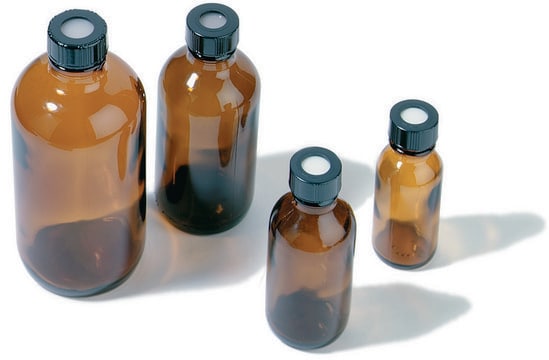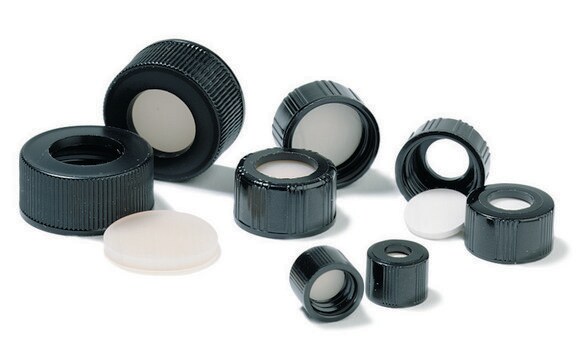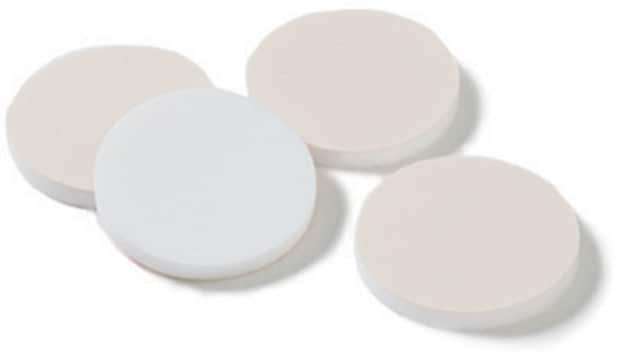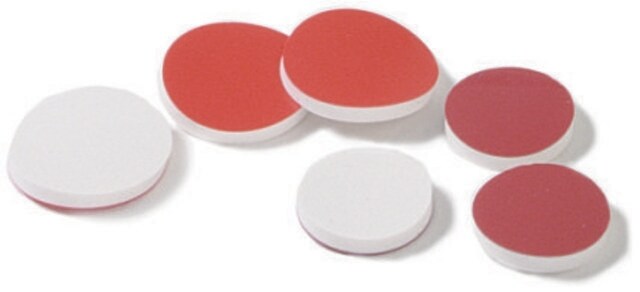23228
Amber storage bottles
volume 30 mL, O.D. × H 32 mm × 80 mm, thread for 20-400, PTFE/silicone septum, black phenolic hole cap, pkg of 12 ea
Synonym(s):
SCREW-CAP AMBER SEPTUM BOTTLE 30ML PK12
About This Item
Recommended Products
material
PTFE/silicone septum
amber glass bottle
black phenolic hole cap
feature
closure type screw top bottle
pre-assembled
packaging
pkg of 12 ea
O.D. × H
32 mm × 80 mm
septum diam. × total thickness × PTFE thickness
18 mm × 125 mil × 2 mil
volume
30 mL
fitting
thread for 20-400
Looking for similar products? Visit Product Comparison Guide
Related Categories
Application
replacement part
Choose from one of the most recent versions:
Certificates of Analysis (COA)
It looks like we've run into a problem, but you can still download Certificates of Analysis from our Documents section.
If you need assistance, please contact Customer Support.
Already Own This Product?
Find documentation for the products that you have recently purchased in the Document Library.
Customers Also Viewed
Our team of scientists has experience in all areas of research including Life Science, Material Science, Chemical Synthesis, Chromatography, Analytical and many others.
Contact Technical Service






